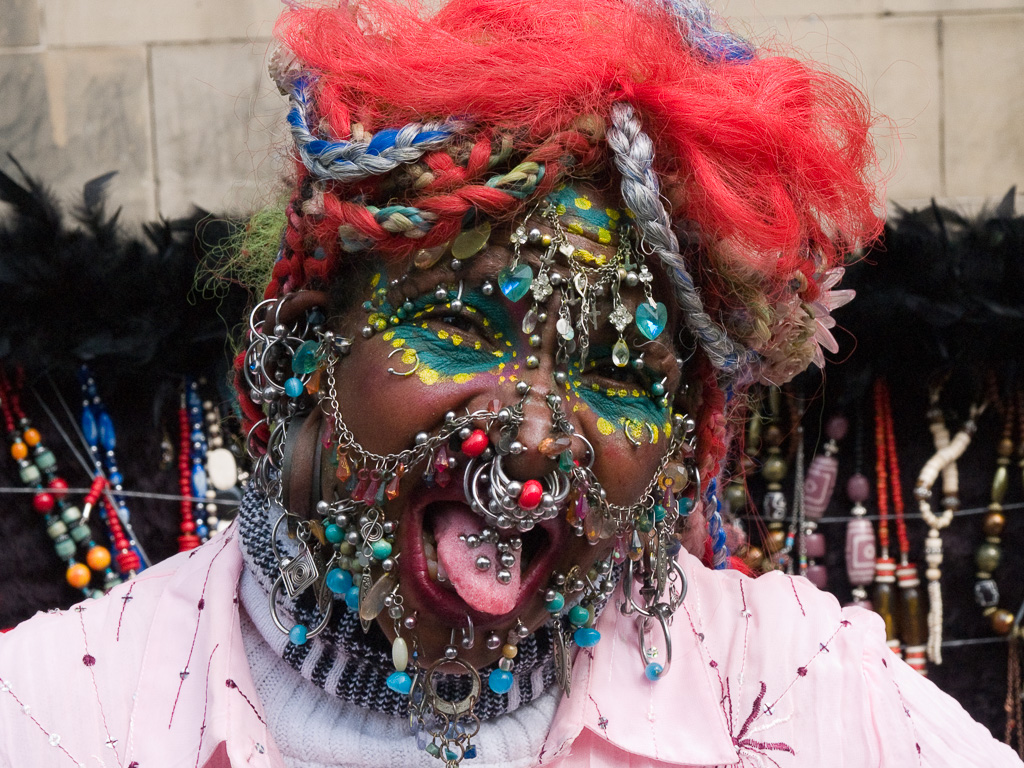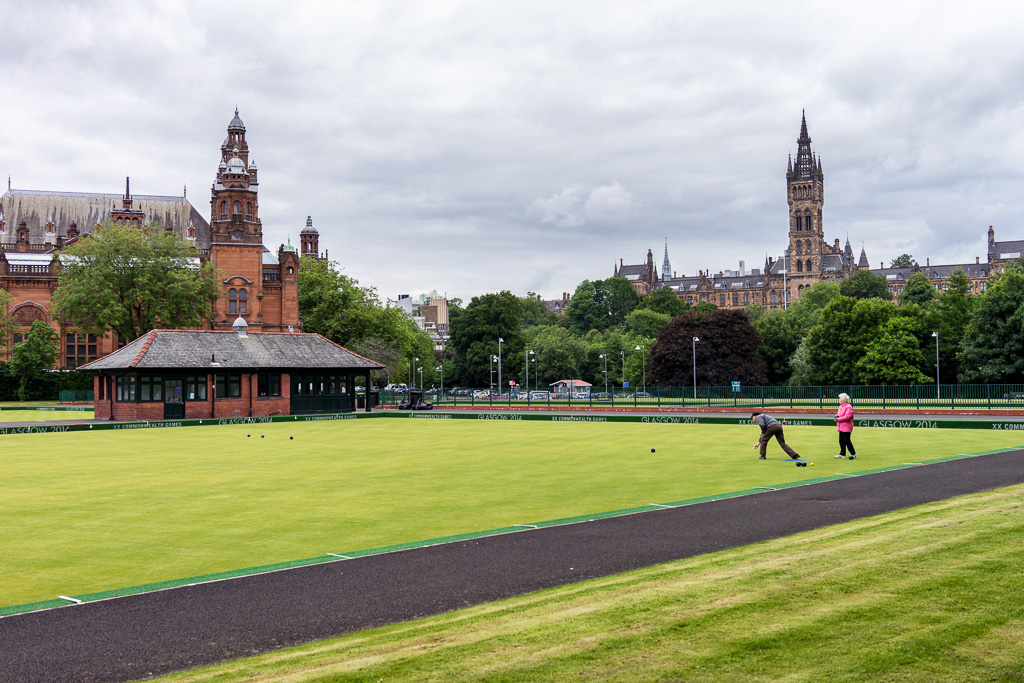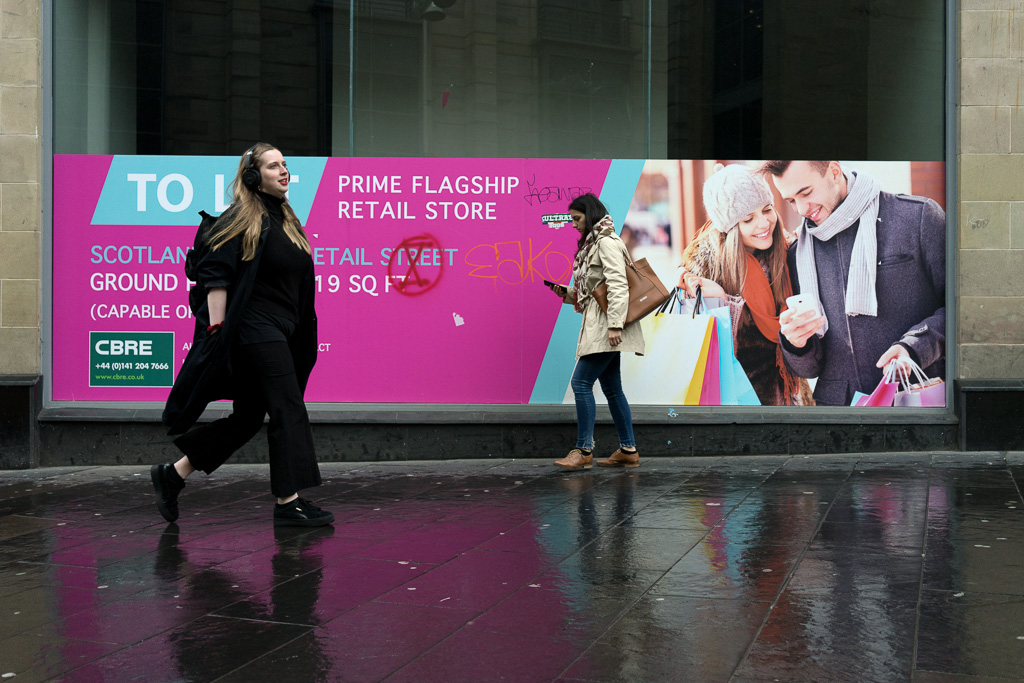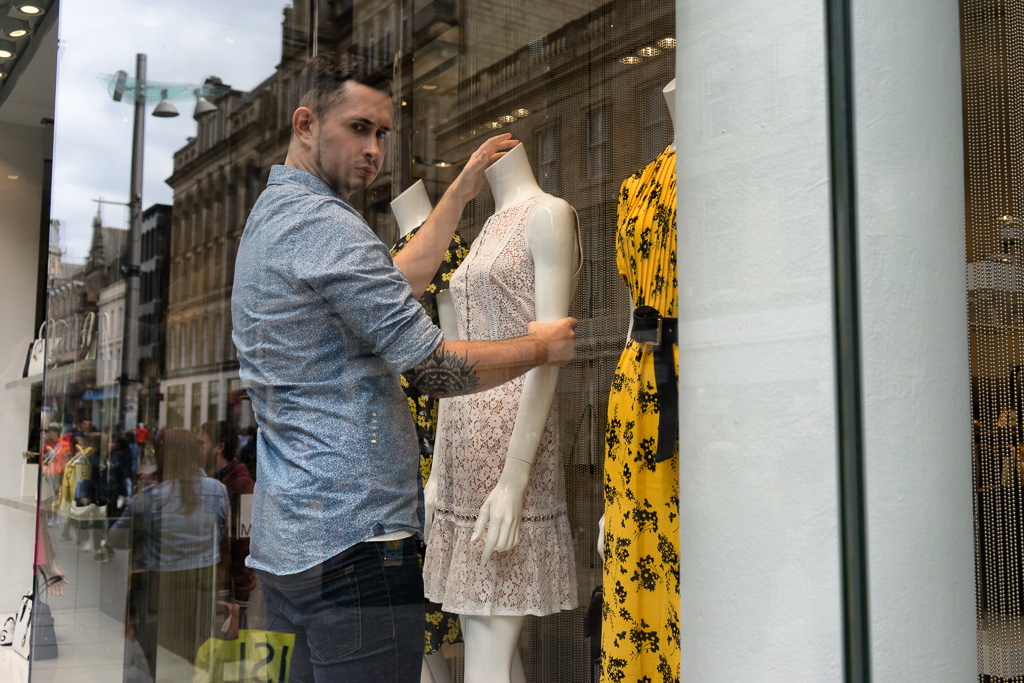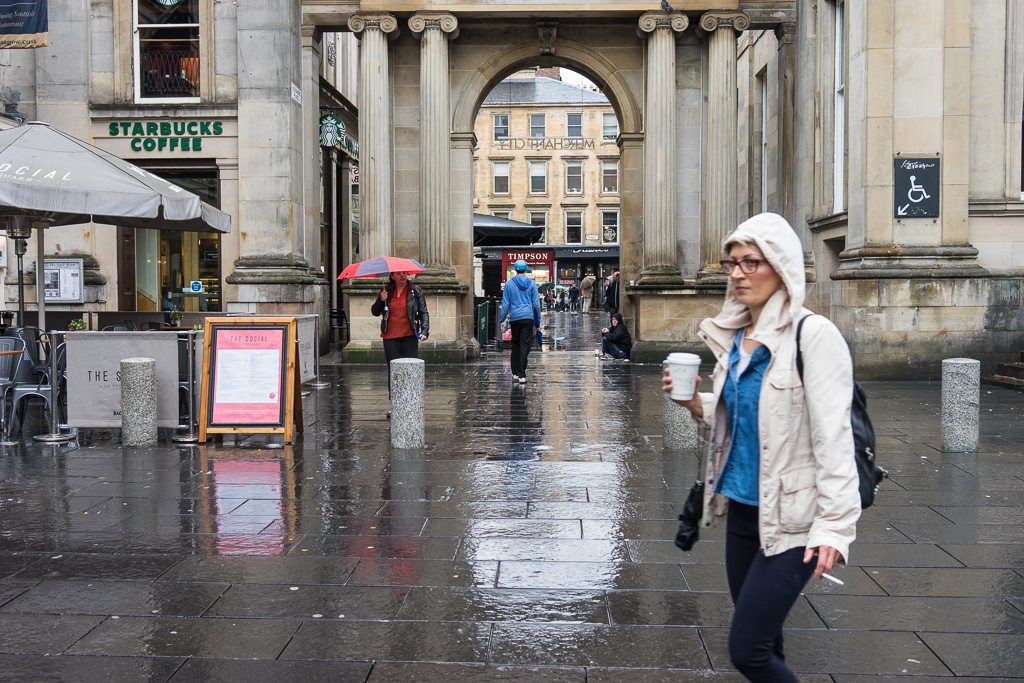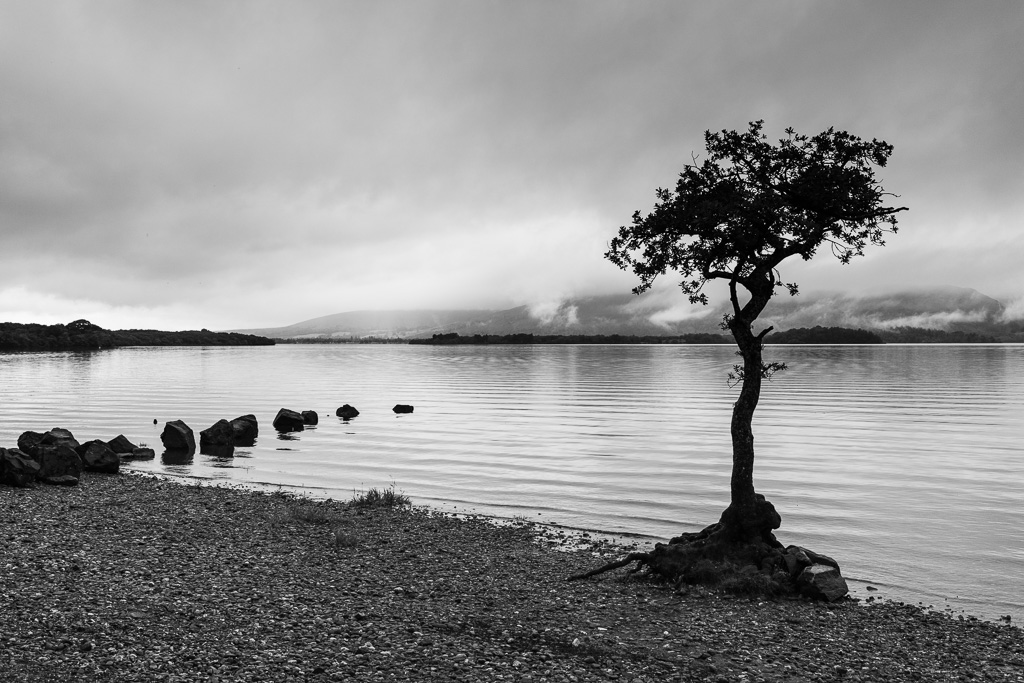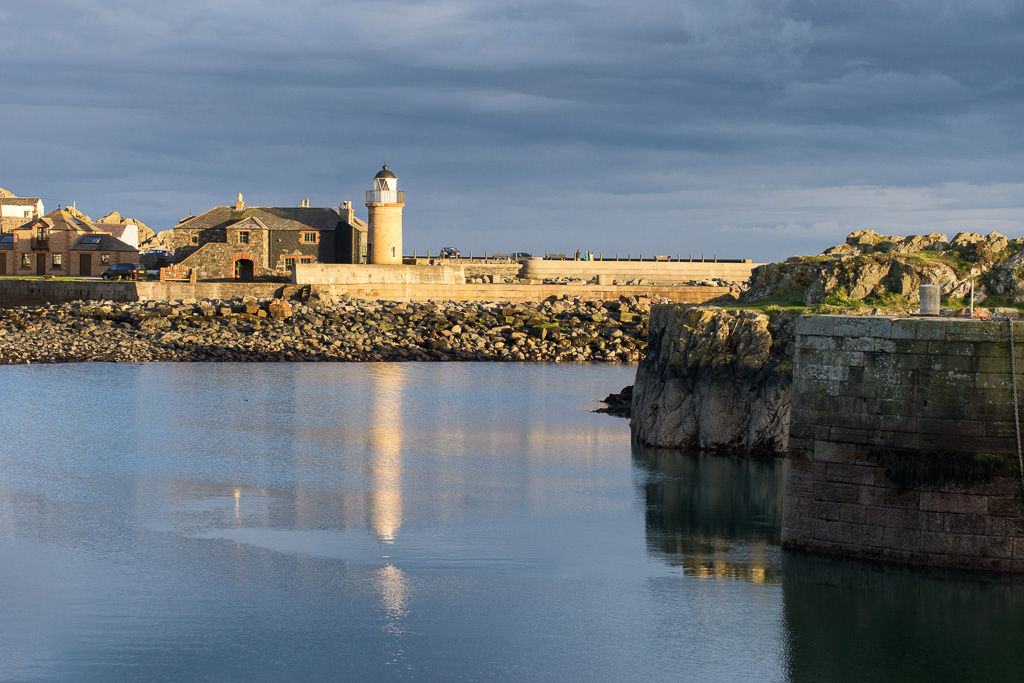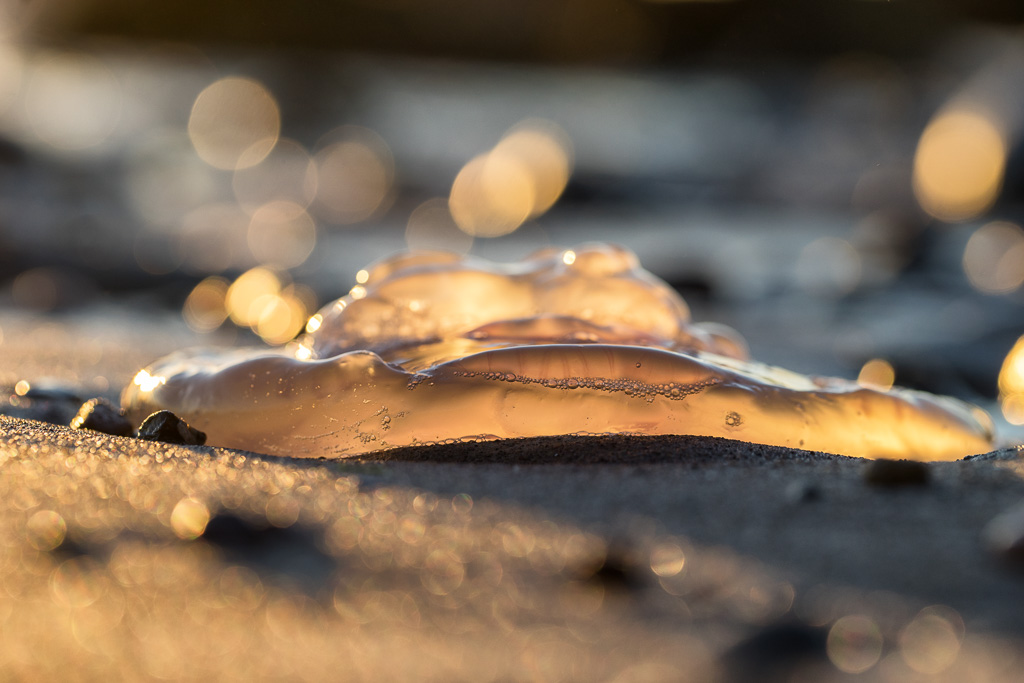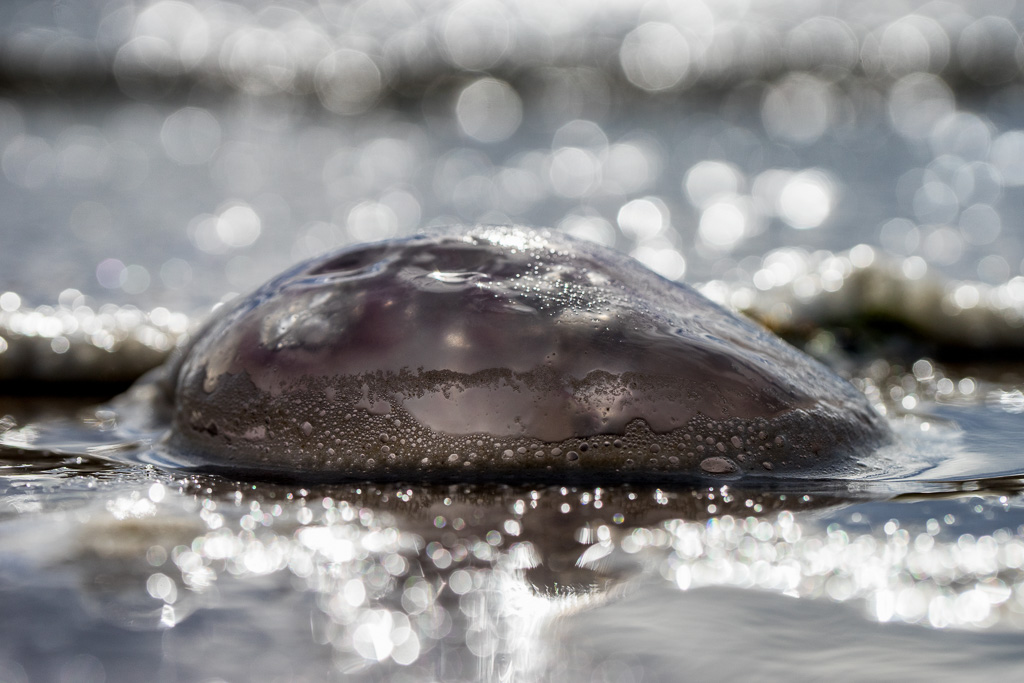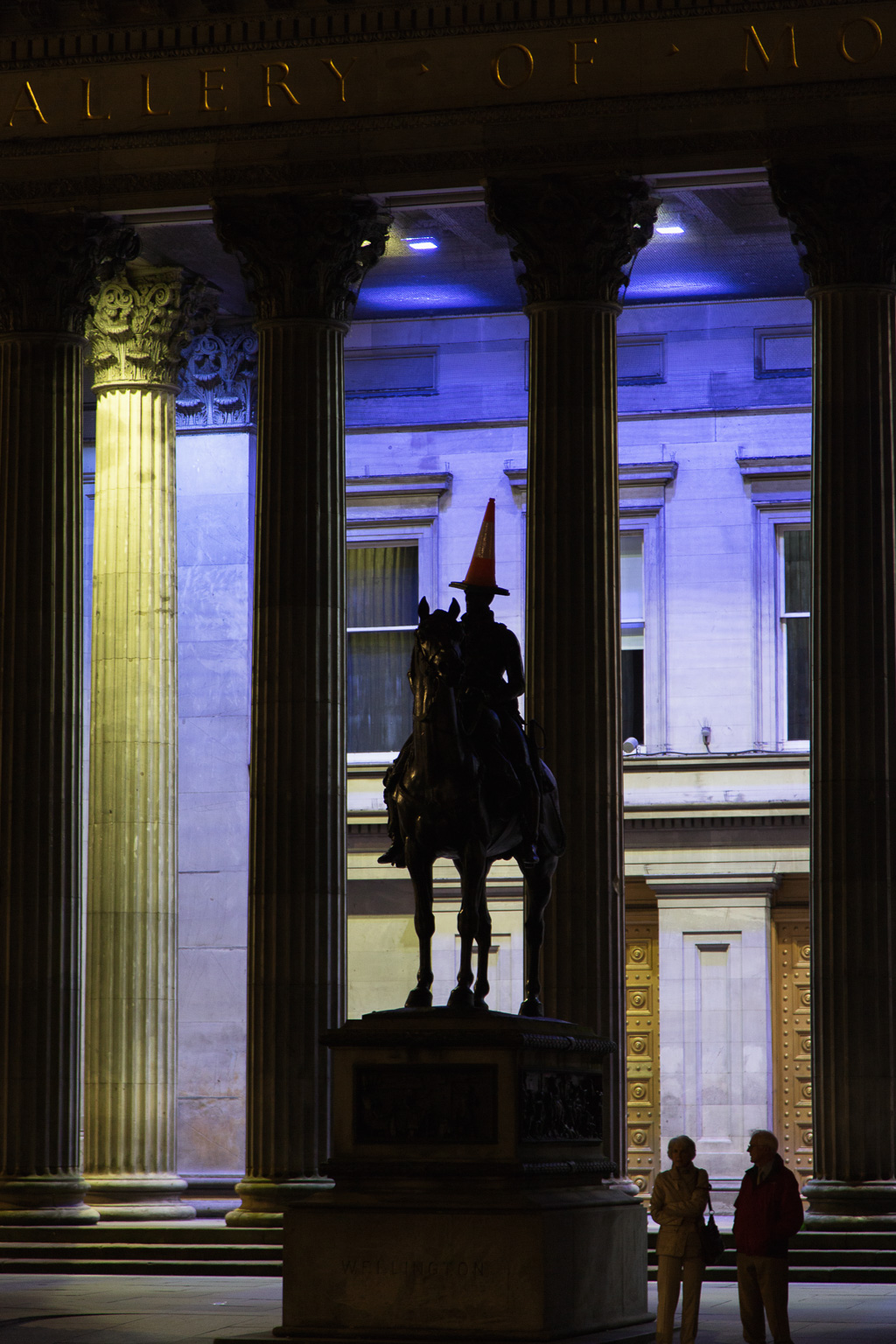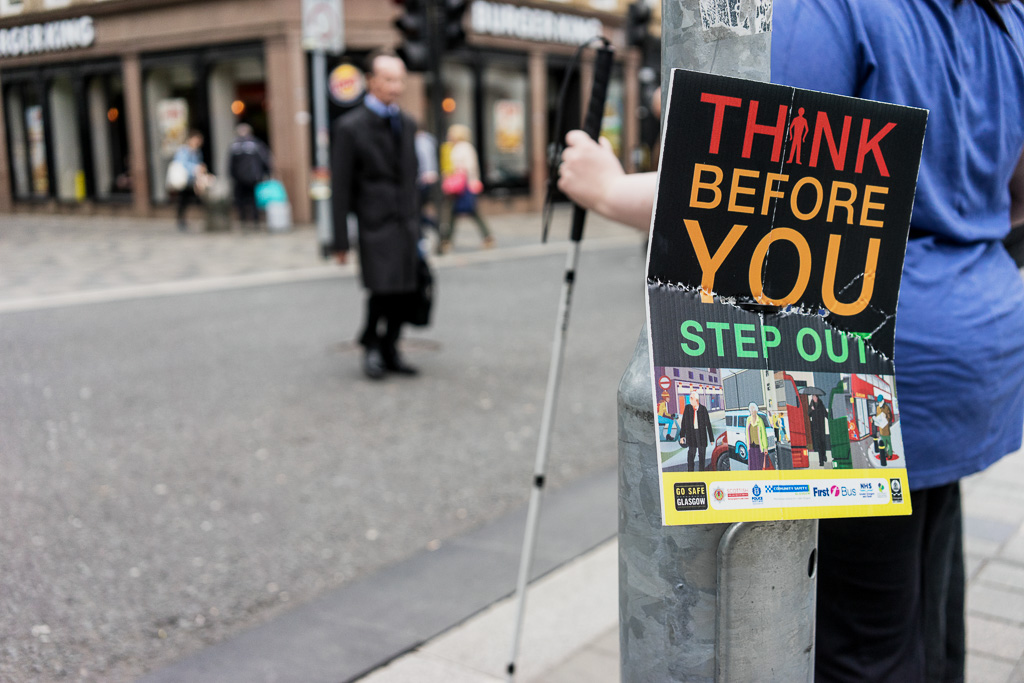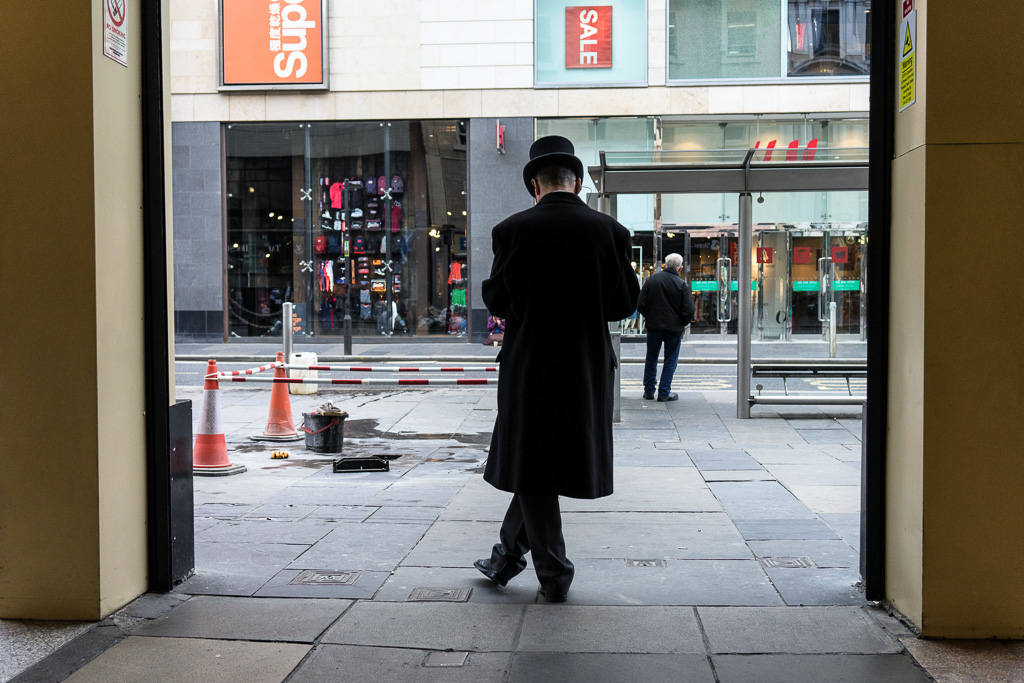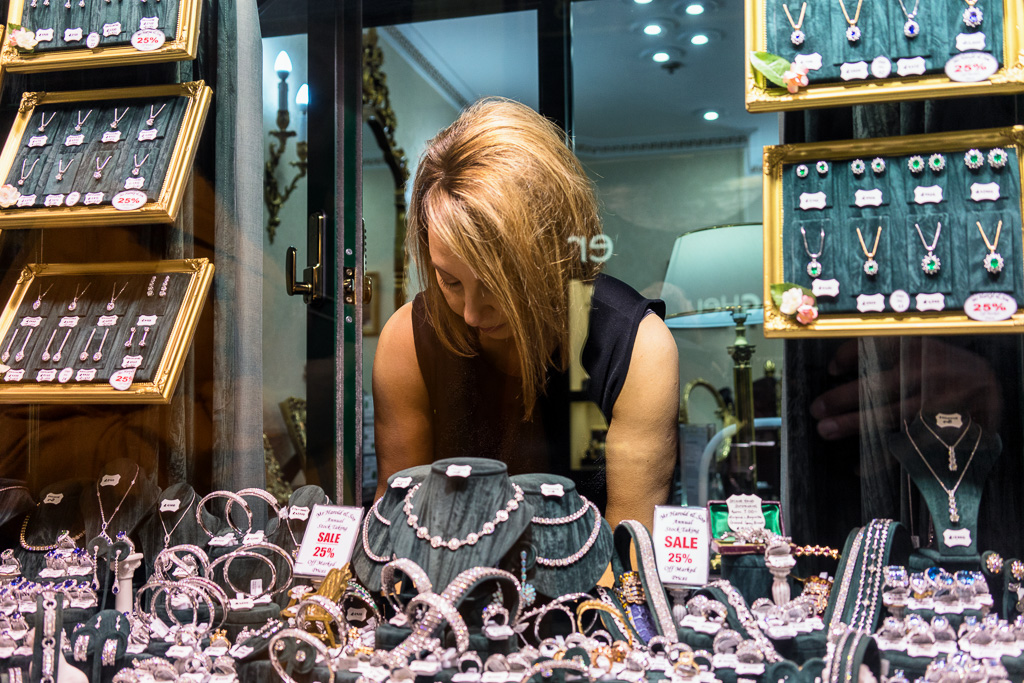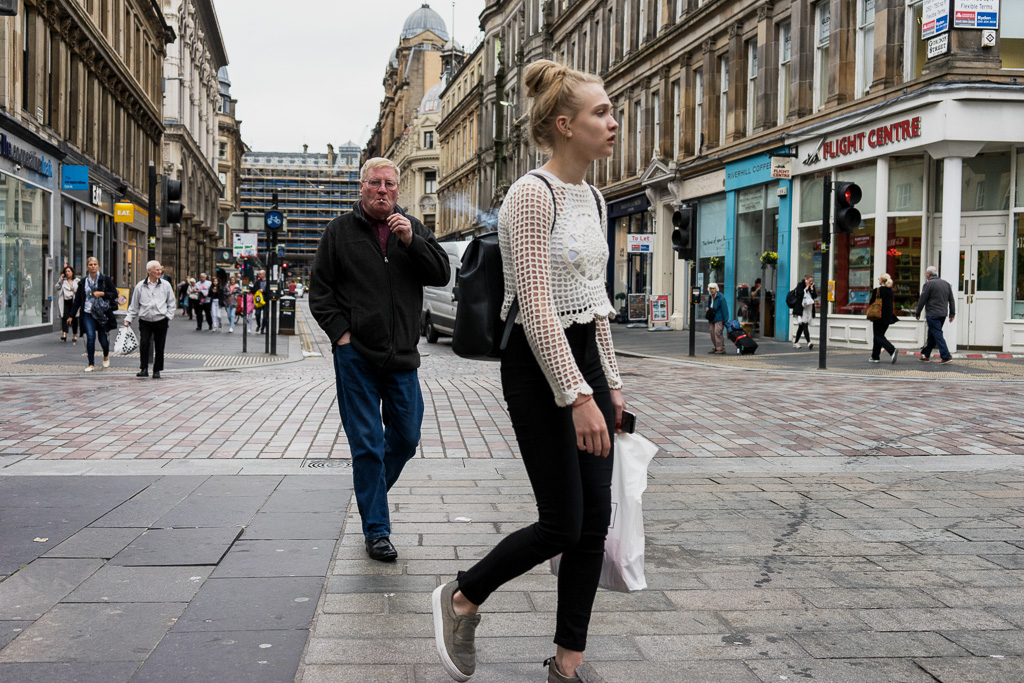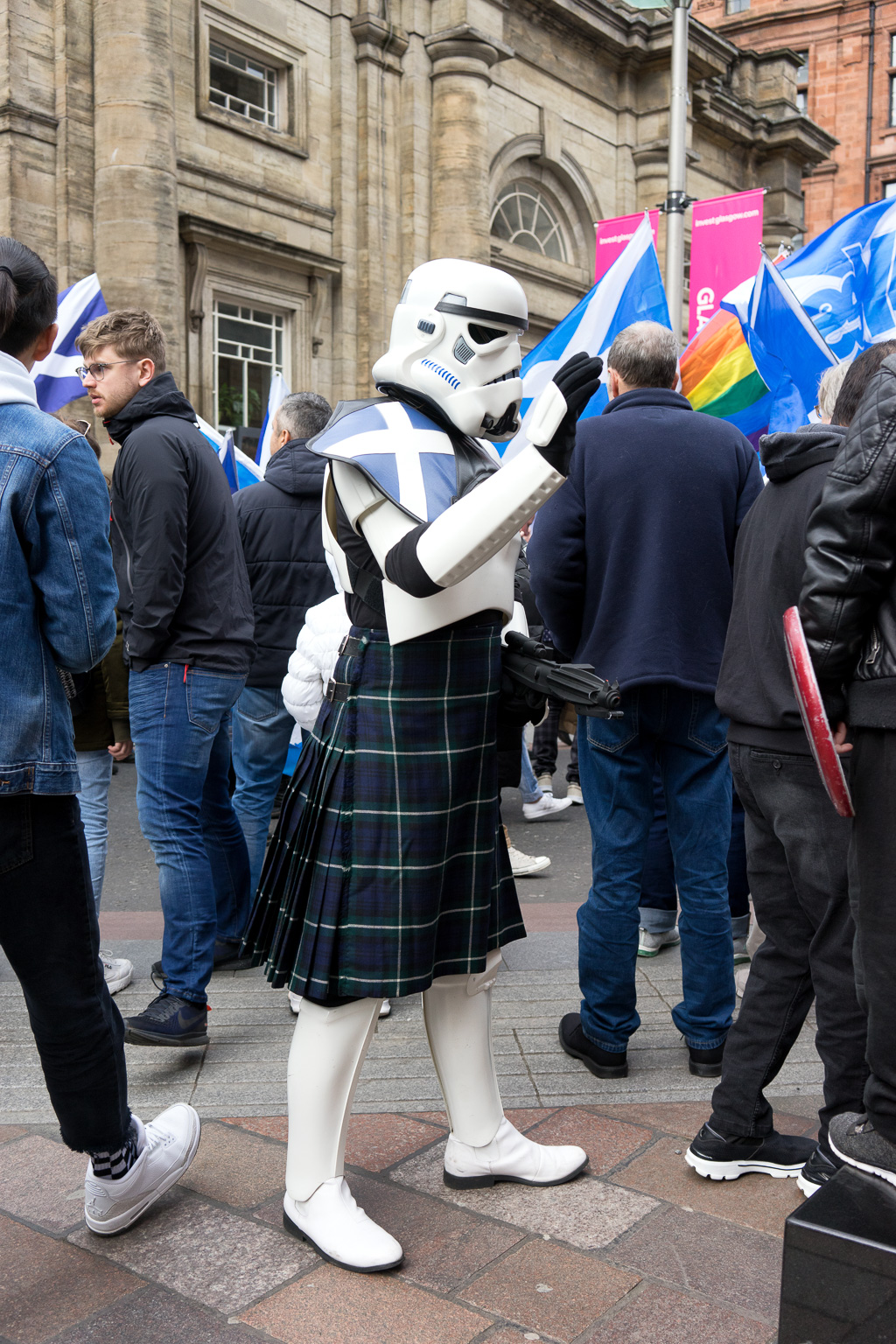At the outset of this series on street portraits, I suggested that my earliest shot came from 2014. I was off by at least 6 years. Here’s a shot I made while strolling down the Royal Mile in Edinburgh in 2008. The subject is Elaine Davidson, the world’s most pierced woman. Apparently, among other things, she has more than 500 piercings in her genitalia. I’m really curious to know how the official from Guinness Book of Records tabulated that count. Then again, I’m not that curious.
Of her many talents perhaps the most surprising is that she has a black belt in Judo which she earned in Japan. Three years after I took this photo, she married a local Scotsman named Douglas Watson. The headline in The Telegraph was: “World’s most pierced woman gets married to balding civil servant.” As a man with little hair, myself, I take exception to this headline. It implies that bald men like me are somehow unequal to the challenge of marriage to a more, shall we say, exotic woman. In the end, maybe he wasn’t up to it after all. They were divorced in 2012.
